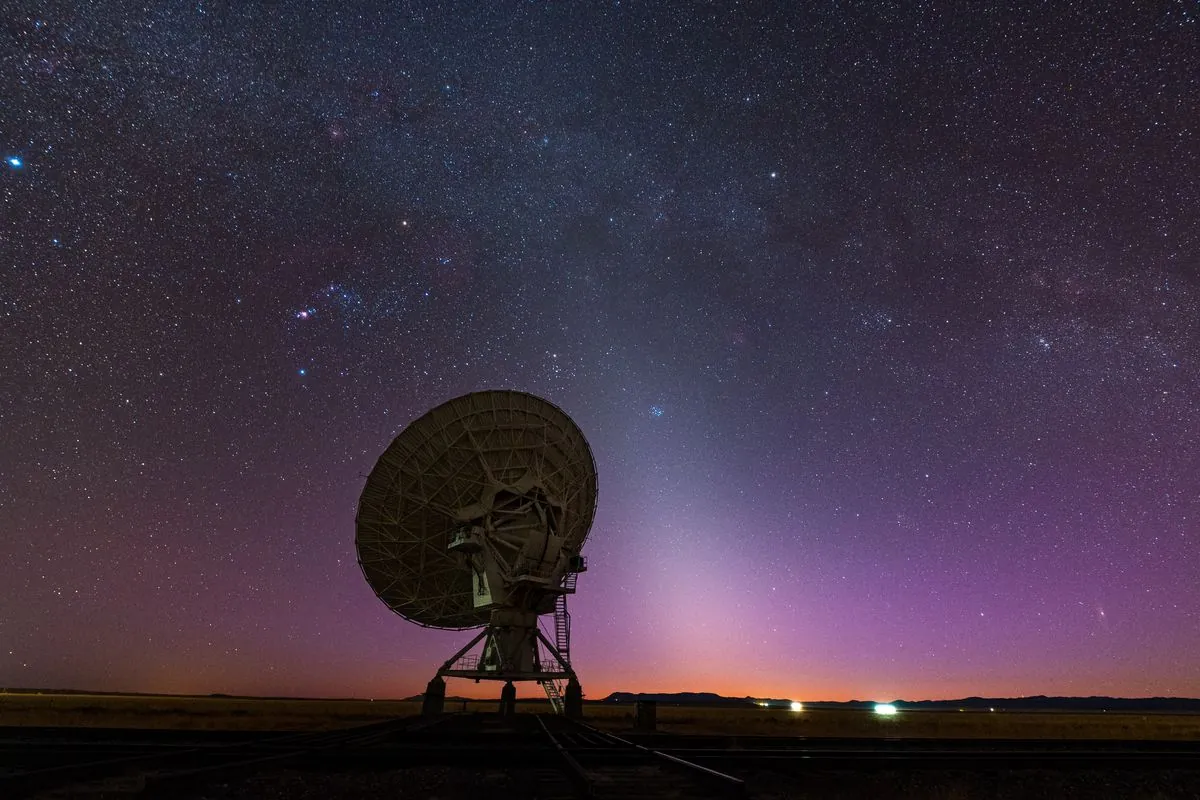Recent observations have revealed that SpaceX's Starlink satellites are emitting unexpectedly strong radio signals, posing a significant threat to radio astronomy. The Low Frequency Array (Lofar) radio telescope has captured footage showing these satellites as bright spots moving across its field of view.
Researchers from the Netherlands Institute for Radio Astronomy (Astron) have discovered that Starlink's second-generation V2-mini satellites emit unintended radio waves up to 32 times brighter than their predecessors. This development has raised serious concerns among astronomers about the future of radio astronomy from Earth.
Professor Jessica Dempsey, general and scientific director of Astron, expressed surprise at the intensity of these emissions:
"We know it's unintended, but they are 10 million times brighter than what we are trying to look for, and we have to talk about it now because it's becoming an existential threat."
The Lofar telescope, primarily based in the Netherlands with antennae across Europe, is crucial for studying low-frequency signals from space. These signals could reveal important phenomena such as jets from black holes or exoplanets.
Starlink currently launches approximately 40 satellites weekly, with 6,350 already in orbit. The company plans to expand its constellation to 42,000 satellites in the coming years. Industry projections suggest that by 2030, there could be over 100,000 satellites in low Earth orbit.
Dr. Robert Massey, deputy executive director of the Royal Astronomical Society, emphasized the need for action:
"What is the point of the pursuit of knowledge and all the investment that goes into that, if we're going to see these facilities effectively crippled?"
The study, published in Astronomy and Astrophysics, involved two one-hour observation sessions on July 19, 2024. The team detected unintended electromagnetic radiation from almost all observed Starlink satellites.
Dr. Cees Bassa, lead author of the study, compared the brightness of these emissions to celestial objects: "Compared to the faintest astrophysical sources that we observe with Lofar, unintended electromagnetic radiation from Starlink satellites is 10 million times brighter. This difference is similar to the faintest stars visible to the naked eye and the brightness of the full Moon."
Astronomers are calling on SpaceX to collaborate with the scientific community to address this issue. They emphasize the need for regulations in space similar to those on Earth that limit electromagnetic radiation for health and technological reasons.
As the number of satellites continues to grow, the astronomical community faces an urgent challenge to preserve our ability to study the universe from Earth. The outcome of this situation could have far-reaching implications for our understanding of cosmic phenomena and the future of space exploration.
